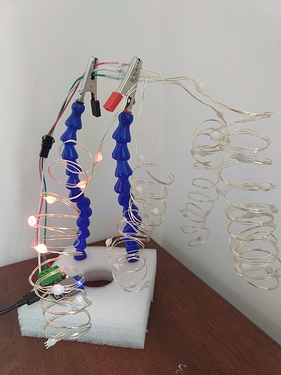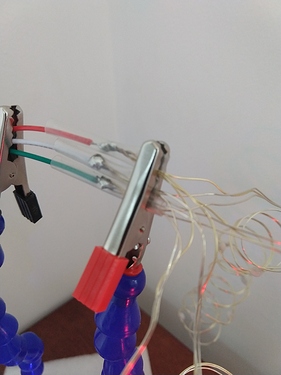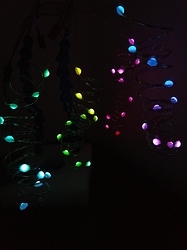My test setup: 4 strands of 10 (curled for ease of control), all on one connector.
Excuse the sloppy soldering
Low exposure so you can see each pixel is different and it’s absolutely not mirrored
No, I have not tried putting two strands together, but I’m going to guess they won’t behave well. Until we understand how it retains “position” info
I’m glad I bought 6 sets, as the price at Amazon has gone up $2 already. (10% increase)
I’ll look at doing some video, the stills don’t do it justice.


